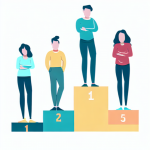Misconceptions About Gamification
Gamification is a rapidly expanding field, with its influence being felt across various industries. However, there are still misconceptions about what gamification is and what it isn’t. Let’s clarify these misconceptions and provide real-world gamification examples.
At the base of good gamification is that it is optimized for human motivation, or what is called Human Focused Design.
The Octalysis Framework is the leading, science-backed gamification and Human Focused Design Framework that can lead to high user engagement ROIs if implemented correctly.
Gamification is Not Just Game Mechanics
Gamification is not merely about adding game mechanics to an experience. While elements like points, badges, and leaderboards are common in gamification examples, they alone do not make an experience engaging or fun. Engagement must be embedded in the experience itself, not just in the elements. Many gamification platforms tell you that adding game mechanics as a layer over your experience will magically lead to high user engagement. Yet we know that is not true.
Gamification is Not Making Something into a Game
Another common misconception is that gamification is about turning something into a game. However, gamification is more about harnessing the motivational power of gameful design and applying it to real-life, often mundane, issues. The goal of gamification is not just to create fun for users but also to generate a high return on investment (RoI) for businesses.
The True Essence of Gamification
So, what is gamification in its true sense? It’s about understanding human motivation and designing experiences that cater to it. It’s not a one-size-fits-all design but a process that considers the different phases of the user experience: Discovery, Onboarding, Scaffolding, and End Game.
Gamification as a Business Design Process
Gamification is also a business design process. It connects the client’s objectives for the gamified experience with the engagement design, ensuring a high RoI. For instance, The Octalysis Group’s gamification examples have resulted in:
-
sales increases of 712%;
-
daily active users of 94%;
-
KPIs by 60%, and social interaction by 300%.
Conclusion
In conclusion, gamification can be a powerful tool but only if it is implemented correctly on a scientifically valid framework. It’s about understanding human motivation, designing for different user experience phases, and ensuring high ROIs. Not just adding some game mechanics.
If you’re interested in seeing real-world gamification examples and learning more about the process, feel free to contact us.






